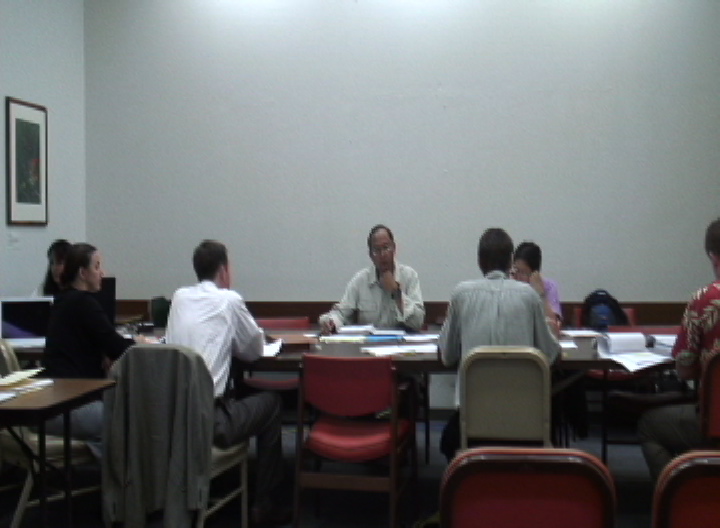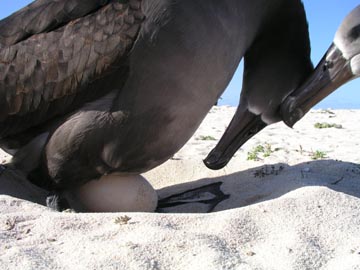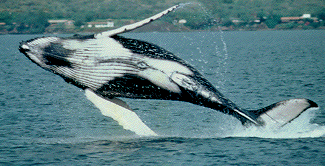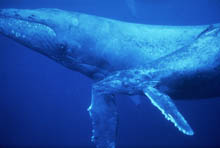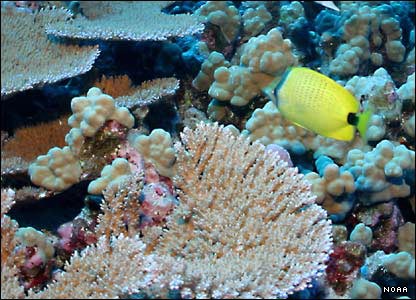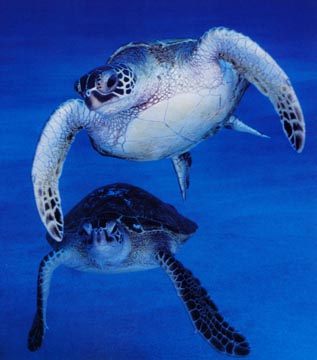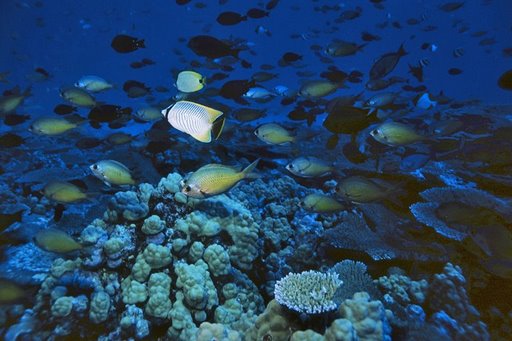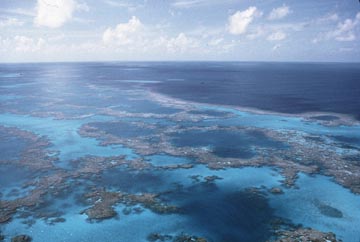Blog
News, updates, finds, stories, and tidbits from staff and community members at KAHEA. Got something to share? Email us at: kahea-alliance@hawaii.rr.com.
- The 2006 HIMB expedition on the NOAA vessel, Hi`ialakai, was one of the first major expeditions permitted in the newly established no-take state Refuge for the Northwestern Hawaiian Islands.
- Despite a prohibition on the transport of live samples and the dumping of wastewater, state and federal officials noticed the researcher was transporting pieces of live coral over 100 miles across the multiple state and federal designated marine protected areas in an open-flow holding tank — a system that dumps used water from the tank back into the ocean.
- Official reports also allege she cultivated bacteria associated with coral disease while the ship traveled from Johnston Atoll.
- HIMB was not granted a permit to import coral or bacteria from Johnston Atoll to the Main Hawaiian Islands from the Agriculture Department. Nonetheless, the researcher was discovered to have bacteria samples from both NWHI and Johnston Atoll under cultivation on board the Hi`ialakai.
- The methods proposed by the HIMB disease researcher had also raised red flags in the scientific community. Before the vessel departed from Honolulu, scientific advisors reviewing the researchers proposal to import disease bacteria from Johnston Atoll to the Main Hawaiian Islands for the state Department of Agriculture noted “possible disastrous consequences” from the research methods, including the spread of potentially invasive coral species and coral disease.
- In their report, they discuss the “unclear scientific merit” of the research and found “little evident benefits from a conservation perspective.” They also expressed specific concerns about the proposed use of an “open flow” system for the transport of live samples and, instead, recommended that “all water in which the corals or microbes from them are held shall be kept in containers that do not release effluents into open or semi-open systems unless that water is sterilized or disinfected.”
Living Language
No ke aha e kupaianaha ai ka ‘olelo Hawai’i ma Hawai’i nei? Why is the Hawaiian languauge a strange language in Hawai’i nei?
Each place in our islands has a Hawaiian name and is associated with mo’olelo or an ancient Hawaiian story. Still, the Hawaiian language with its history, insights, and cultural significance remains silenced in its ‘one hanau or birthplace.
The collection of ‘olelo no’eau or Hawaiian proverbs provide some evidence that the Hawaiian language evolved and emerged as they discovered and wandered the beautiful landscapes of this new and unfamiliar land.
The steep cliffs of the Ko’olau mountains and high sea cliffs of Moloka’i provided one example for an avenue of poetic thought and expression that were used to compare and contrast plants, animals, and people to its sheerness and distinction.
Over the next few months, we hope you will see more more Hawaiian language in KAHEA’s outreach and website–part of a renewed commitment from us to integrate the Hawaiian language as a living part of our daily work.
We’ve seen some other hopeful examples around, including the recent release by GO! Airlines of their bilingual website. So maybe GO! Airlines pilots *have* been snoozing behind closed doors… but the company has invested in an effort to provide their Hawaiian language speaking customers a choice to make their reservations in ‘olelo Hawai’i.
Let’s all be a vehicle to support the Hawaiian language in the capacity we can as individuals, communities, and organizations. E ola ka ‘olelo Hawai’i!
being heard? yup, it feels good.
From Marti:
I admit to still being on cloud 9 about the recent announcement of the hearing officer’s decision on KAHEA’s standing to participate in the contested case on the research permit violations in the NWHI. Hooray! What an amazing affirmation of the power of showing up.
We have attended every possible hearing about research permits to the NWHI and raised serious concerns about the lack of enforcement action on these research permit violations. We have shown up to talk about the lack of standards to determine who should be allowed up there and the lack of best practices to ensure their activities do no harm, as the law requires. We have again and again said that these research permit violations are a serious breach of public trust, and that rules should apply equally, no matter who is in violation–everyone should be held to the same standard: fishers, researchers, sight-seers, everyone.
I wish had a dime for every time I’ve heard someone say with regards to these research violations, “Trust me, researchers would never harm the resource.” Talk about totally missing the point. The point is that researchers, like everyone else, are obligated to know and follow the rules put in place to protect this fragile public trust resource. Simple as that. The fact is most people don’t ever to intend to harm the environment, but they do because they don’t follow the rules, don’t think that their actions could have an impact.
It was incredibly empowering to sit at that hearing table – elbow to elbow with HIMB’s attorney and the Attorney General on behalf of DLNR – and have an impartial officer of the court listen to all three sides. We had an equal opportunity to present arguments and evidence. And in the end, this impartial officer said, “Yes, KAHEA brings a meaningful perspective to this discussion and should be party to this case.”
Wow. For that, my faith in the public decision-making process is renewed. We couldn’t have asked for a more meaningful affirmation of our voice and role.
Too often the voices of those most directly affected by the decisions of officials are marginalized or even lost altogether. It is easy for money and politics to drive decisions. But when those influences are stripped away and those who have nothing to give but love for our ‘aina – people like Uncle Buzzy – can sit at a table and be heard on equal terms with all rest… that is when the best decisions are made.
It was these people – those without power or money – that led the struggle for the strongest possible protections in the Northwestern Hawaiian Islands and successfully made their voice heard. And it will be these same people who will continue to ensure that those protections are fully implemented and enforced…. because these protections are nothing if they aren’t enforced, fully.
Hooray, hooray today–for the little guy!
Highlights of KAHEA’s concerns about lack of DLNR enforcement (from our recent webpage update):
The violations were first reported to DLNR staff in May 2006 while the vessel was still in the NWHI. But DLNR staff failed to notify the proper enforcement division, DOCARE, until late February 2007, almost a year after the infractions occurred. No investigators met the ship when it docked in Honolulu to inspect what the researchers brought back with them.
“This is a major problem,” said Marti Townsend, Program Director for KAHEA. “The history of close working relationships between DLNR and HIMB staff has clearly called into question DLNR’s ability to be objective and properly enforce the law.”
Before the incidents were investigated by DOCARE and voted on by the Land Board, staff with the Aquatics Division of DLNR attempted to negotiate a penalty with the researchers at HIMB. The staff brought the enforcement action before the BLNR twice – first in January 2007 and again in July 2007. Both times the staff recommended that the Land Board impose weakened penalties against the HIMB researcher, side-stepping the Refuge’s strict “one strike” law that prohibits future permits to be granted to past permit violators.
“Given all of the tremendous public support for the strongest possible protections, and political will for the creation of these protections, it is astonishing that personal friendships and financial ties still seem to determine the near absolute lack of enforcement of NWHI rules,” said Townsend.
it's called "validation," folks.
Judge Ezra’s ruling today on the Navy’s use of high-intensity mid-frequency sonar is a basic affirmation of what advocates from environmental and native Hawaiian communities have been saying for years: the Navy has NOT met its obligations to protect the unique natural and cultural resources upon which the people of Hawai’i depend.
Marine mammals–including kohala, or Pacific humpback whales–are extremely important to Hawaii’s unique cultural and natural heritage. The Navy has not, thus far, taken adequate measures to protect them, as the law requires–thus disrespecting and potentially destroying a part of what we all love about Hawaii nei. We can only hope Judge Ezra’s preliminary injunction will serve as a desperately-needed wake up call to the Navy about their impact on our marine resources.
Judge Ezra’s findings affirm that the Navy sonar practices contradict the best available science about what level of ocean noise is harmful to marine mammals and failed to analyze reasonable alternatives. The Navy also, according to the decision, failed to notify and involve the public as required by law. Judge Ezra’s preliminary injunction says that the Navy can and must do more to ensure its actions do not harm Hawaii’s unique marine resources, and must do a better job of incorporating and addressing public concern through the environmental impact statement process.
This is hopeful news, as the review process for the Hawaii Range Complex expansion is moving forward. The expansion proposal will, among other things, expand the current training range to include the Northwestern Hawaiian Islands. It remains to be seen whether the Navy will heed the Court’s ruling on this use of harmful sonar, as it undergoes the same review process this range expansion proposal.
(top picture from www.earthtrust.org, bottom photo from Hannah Bernard via the PHWS website)
Federal Court Issues Injuctions, Requires Navy to Do More to Protect Hawaii's Marine Mammals from Harmful Sonar
Hawai‘i federal district Judge David A. Ezra today found that the Navy is violating federal law and enjoined it from carrying out its Undersea Warfare Exercises in Hawai’i’s waters without adhering to additional mitigation measures to protect marine mammals. The Navy is also required to take a hard look at the impacts of its high-intensity, mid-frequency active (MFA) sonar by preparing an Environmental Impact Statement.
Earthjustice, on behalf of Ocean Mammal Institute, Animal Welfare Institute, KAHEA: The Hawaiian-Environmental Alliance, the Center for Biological Diversity, and Surfrider Foundation’s Kaua’i Chapter, sued the Navy last May. Judge Ezra issued a preliminary injunction after finding the Navy was violating the National Environmental Policy Act (NEPA) and the Coastal Zone Management Act (CZMA), and was likely to cause harm if allowed to proceed without greater protections.
He noted the Navy’s harm threshold—173 decibels (dB)—contradicts the best available science, and “cast into serious doubt the Navy’s assertion that, despite over 60,000 potential exposures to MFA sonar, marine mammals will not be jeopardized.” The Court said further the Navy had failed to analyze reasonable alternatives to conducting its exercises in the manner it proposed, failed to notify and involve the public as required by law, and failed to take into account the potential for serious harm from an exceptionally controversial activity.
Learn more about the lawsuit and the impacts of high-intensity mid-frequency (MFA) sonar on Hawaii’s marine mammals.
It's about respect, man.
From Miwa:
It’s true that the HIMB researcher currently under investigation for NWHI permit violations is coral disease researcher, and that coral disease is bad stuff. In doing this work, we’ve learned more about coral disease than we probably ever wanted to–coral disease is an important concern in our oceans worldwide.
So why advocate strict enforcement for a coral disease researcher?
What’s important to understand is that: It’s not just about understanding the ecosystem and its resources.
It is about achieving that understanding in a pono way–by researchers who respect the cultural and natural significance of the resource, take responsibility for their actions, and are committed to following the rules put in place to protect this fragile and uniquely Hawaiian place.
And so you have to ask: was this research done in a pono way?
We’re not the only ones for whom this stuff seemed just a little, er, inappropriate.
I come from a conservation and research background–and I admit that makes me feel a bit squirmy when the human footprint being talked about hits so close to home. This is a true test for all of us–for conservation and science communities–to recognize the scope of impact of our own activities. For a place as fragile, and as culturally and ecologically unique as the Northwestern Hawaiian Islands, this means taking a hard look at our attitudes, our institutions, our intentions, and our ambitions.
In the end, it’s really all about respect. It’s either there, or it’s not. Respect for rules, respect for the resource, and respect for the concerned public to whom this public trust resource ultimately belongs.
In her testimony to the BLNR on July 27, 2007, the HIMB researcher under investigation defended her actions, characterizing the violations as a “minor misunderstanding.”
“There was never any risk to the environment for what I did, whether it was approved or not,” she testified.
For the largest conservation area of its kind in the world, for the people who fought so hard for the rules protecting this incredible and untouched Hawaiian place, for all the future generations of Hawaiian people to whom this place also belongs… I have to believe that we can do better.
(top picture from http://news.bbc.co.uk/1/hi/5084944.stm, bottom from kahea.org)
State-Appointed Hearing Officer Affirms KAHEA's Standing in Historic Decision
Investigation of HIMB Research Permit Violations for Northwestern Hawaiian Islands Expanded,
Contested Case Hearing Officer Recommends Long-Time Advocate, KAHEA, Be Party to the Case
HONOLULU – In a historic move, citing KAHEA’s long history of actions to protect the NWHI, state-appointed hearing officer for the Board of Land and Natural Resources, Louis Chang, recommended on Friday that the Board grant KAHEA: The Hawaiian-Environmental Alliance standing as a party to a landmark case concerning the first recorded major violations of the state’s new stringent Northwestern Hawaiian Island Refuge rules. “The Northwestern Hawaiian Islands are a public trust resource, and we welcome this affirmation of our kuleana to ensure that the strict rules we worked so hard to establish are fully enforced so that this fragile and unique place is well-protected,” said Vicky Holt-Takamine, KAHEA Board of Directors President.
Federal and state officials have testified that in 2006, during one of the first major research expeditions permitted to conduct extractive activities in the state’s newly created no-take Refuge, scientists from the Hawai’i Institute of Marine Biology (HIMB) — including a former state Department of Land and Natural Resources employee –cultivated coral disease bacteria in the NWHI, transported bacteria within and outside of the NWHI, and attempted to bring bacteria cultures to the Main Hawaiian Islands, in violation of the state’s strict permit requirements and state and federal quarantine and customs laws regarding the transport and import of disease organisms. Officials testified that an HIMB disease researcher harvested, cultivated, and transported live coral within the NWHI, dumping wastewater from the coral tank overboard as they traveled between islands. These actions, which occurred in 2006, represent serious violations of state permit conditions designed to protect the NWHI from the spread of disease and invasive species, as well as state and federal laws.
The NWHI Refuge specifically establishes a ‘do no harm’ standard for all activities there,” said Louis “Buzzy” Agard, former NWHI resident who fished commercially there and later fought for strong conservation measures. “This should mean human activity in the NWHI is strictly limited so as to leave no human footprint on what is left of this delicate marine ecosystem.” According to Agard, “If this were a fishing violation, they’d throw the book at them. But this is a case of colleagues and friends of DLNR staff. There seems to be a double standard for these violators.”
Efforts by the Hawaii Institute of Marine Biology (HIMB) to block enforcement of strict state rules protecting the Northwestern Hawaiian Islands State Refuge were dealt a blow with the publication of the recommendation on Friday indicating that — as per KAHEA’s request — the investigation into apparently illegal activities would now be broadened and that KAHEA has standing in the case. There have been persistent rumors, however, of back-room attempts to lobby Board members regarding this case and to encourage DLNR to take extraordinary measures to overturn the hearing officer’s recommendation.
“This is historic,” said Miwa Tamanaha, Executive Director of KAHEA. “We have serious allegations of research permit violations in the face of more people and research vessels heading to the NWHI. What is decided here in this first enforcement action against research permit violations will affect all future decisions about how to fully protect this uniquely Hawaiian no-take marine environment.”
The Land Board is expected to rule on the recommendation March 7, 2008.
You can see the full case filings and get more information at www.KAHEA.org
(top photo from keoki, and bottom photo from kahea.org.)
our world gets bigger.
UPDATE from Rich on 2/29: Got word yesterday that the House Finance Committee passed HB839 with amendments!

From email from Rich ma over at Beach Access Hawai’i in Kailua:
I was going to use a clever subject line for this email — something like, “Show me the money!” because that’s what it comes down to now. We’re asking the State to pony up bucks to do this beach access survey and report. But a little earlier I got a phone call from someone in our group…
His mother passed away this morning and he wanted the phone number of another BAH member, because he needed help getting a canoe so he could scatter her ashes in the waters off the Mokulua islands. He said she loved Lanikai and Kailua Beach, and this is what she wanted.
Until I got involved with this cause, I didn’t know him or the paddler he wanted to get in touch with. I think it speaks volumes about what the beaches and ocean means to all who live in Hawaii. It connects us, and brings us together. You know those people who put up gates on “private” roads? Their world has gotten smaller, while our circle of friends is growing and getting bigger.
You can support the bill he’s talking about–HB839– by showing up to the hearing and/or emailing in your testimony to the finance committee. FINtestimony@Capitol.hawaii.gov (contact Rich at figeli001@hawaii.rr.com if you need sample testimony to follow.)
From BAH: The meeting will be in Room 308 at the State Capitol building. HB839 is at the top of the agenda, so testimony will probably start around 11:15 am, and could continue for a half hour to an hour depending on how many people show up.

